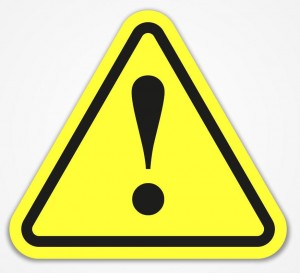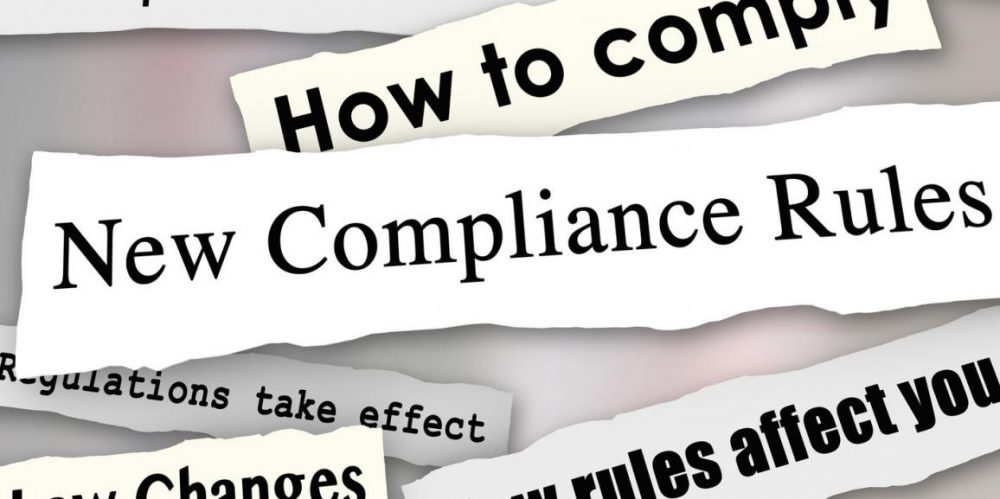Most commonly identified by the many public warnings proliferated through the state, PROP 65 was enacted with the intention of helping Californians “make informed decisions about their exposures to these chemicals from products they use and places they go.”
Here’s a sign you may have seen at your local Starbucks for yes, your coffee. Starbucks places warnings for a cancer-causing substance called acrylamide which occurs once coffee beans are roasted, or goods are baked.
 Well, those warnings are about to change yet again. In September 2016, after almost two years of public hearings and consideration, a swathe of changes to the PROP 65 warning regulations were adopted, to be made effective on August 30th, 2018.
Well, those warnings are about to change yet again. In September 2016, after almost two years of public hearings and consideration, a swathe of changes to the PROP 65 warning regulations were adopted, to be made effective on August 30th, 2018.
Five years ago, businesses could choose to opt out of the California market and until today there are businesses that simply choose to label by default. The purpose of the new revision is to ultimately benefit the consumer and the environment by creating better transparency through the supply chain.
To this end, the new warning system has the following goals:
|
As we pass the half-point of this two year transition period, let’s review once again how those changes affect our industry:
• Redefining Responsibility: Good news for Retailers
Warning responsibilities are more clearly shifted for allocation among manufacturers, producers, packagers, supporters, suppliers, importers and distributors. Retailers still carry responsibility, but these are significantly minimized.
• Potential Escape from Liability: Even more good news for Retailers
Should a retailer receive a 60-day notice of violation, they potentially eschew liability if they can prove they don’t have actual knowledge of the presence of a listed chemical, and if, within five days after receipt of the 60-day notice, either immediately stops selling the product or continues to sell by providing the appropriate warnings.
• Retailer’s Primary Obligation Clarified
Retailers are primarily responsible for the placement and maintenance of warning materials in the retail environment, including but not limited to products sold over the internet or via catalog.
• Retailer Obligation to Provide Information
Retailers are also mandated to provide public enforcers such as the lead agency, the attorney general, district or city attorneys and any private bounty hunters with information regards the manufacturer, supplier or distributor of accused products.
• New Warning Symbology, Language, and Formats. 
Warnings now include the mandatory use of a warning triangle such as the one pictured here.
Warning language and format has also been made more precise with new regulatory text mandated on the OEHHA website.
Provision of warnings in languages in addition to English are also required in certain circumstances.
• Warnings are Tailored to Specific Endpoints.
Endpoints refer to the end-result of substance exposure; for instance, one substance may cause cancer, while another may cause reproductive toxicity. Warnings must now specify the substance as it relates to its endpoint. Where a substance may lead to both endpoints, the warning would also be tailored to reflect that.
• Short-form Warnings
Consumer product warnings can be shorter and do not need to identify the listed chemical. Instead, it would simply state the endpoint such as “cancer” or “reproductive harm” as well as reference the official OEHHA warning website.
• Internet and Catalog Warnings
New requirements are made for transmitting warnings on products sold over the internet or through catalogs, with the express proviso that these be clearly communicated before the consumer can finalize the sale.
• Product Manufacturers with No Direct Retail / Chain of Commerce Obligations
Product manufacturers with no direct retail capabilities have two options: One, they could label the products with the required warning.
Or two, they could provide a written warning notice and warning materials to importers, suppliers, distributors or packagers.
Appropriate compliance actions vary along the chain of commerce as the product travels downstream. Businesses who do not sell finished product directly and who therefore must use the written notice option, must renew this notice within six months of issuance, and annually thereafter. Under this option, an additional notice is also required within 90 days if a different or additional chemical or endpoint is included.
• Environmental and Occupational Exposures
Warning rules for these instances have also been revised.
• Product-Specific and Situation-Specific Warnings
New or revised warnings for the following have been created and/or revised: food, alcoholic beverages, restaurants, medical and dental care, raw wood, furniture, diesel engines, motor vehicles, recreational vessels, enclosed parking facilities, amusement parks, petroleum products, service stations and vehicle repair facilities, and smoking areas, among others.
If you currently have labels or notices which follow the September 2008 rules, these are good until August 30th, 2018.
Exceptions:
There are two exceptions to the new warning revisions:
1) Consumer products manufactured before August 30th, 2018 which carry warning labels following the September 2008 rules and which are currently being retailed are deemed compliant; the date available for purchase does not determine if a product needs a new warning.
2) Products using warning methods and content contained in a court-approved settlement. However, if the same business carries another product not named in that settlement which can also cause significant exposure to listed substances, the warning regulations, and the effective date would apply.
The new warning changes can appear to be challenging. However, in a 2015 UC Davis research study where more than 1,500 randomly selected Californians where interviewed, 77 % found the new specific warnings more helpful than the current generic warnings in place (Sept. 2008 version).
There have certainly been more refinements on this last set of changes that previously discussed in prior attempts and it’s hoped that it will bear true to its intention of more effectively protecting Californians from harmful chemicals by delivering clear and relevant information.
For more details on the new PROP 65 warning changes, visit https://www.p65warnings.ca.gov/ If you’d like to hear more about films that comply, please contact us at info@pvctech.com or call us at 1-888-782-323, our staff will be happy to help you.
The regulatory text and supporting rulemaking documents can be viewed or downloaded from the State of California OEHHA website.

